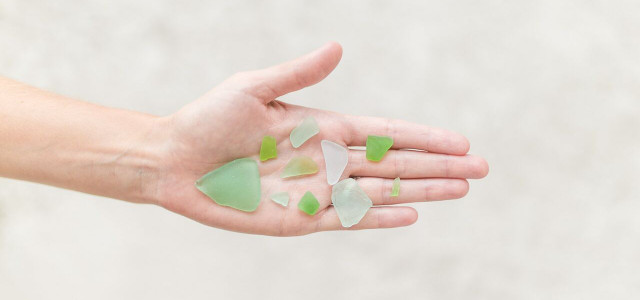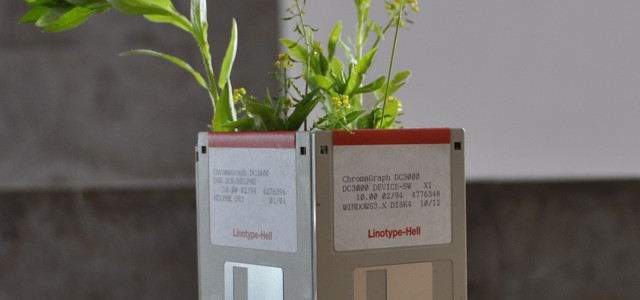Have you ever come across colorful-looking pebbles on the beach? It’s probably glass. What is sea glass and how does it end up on the shore? Find out here.
If you look close enough to the beach while you’re strolling along it, you might come across what appears to be smooth and colorful pebbles or stones. Those aren’t stones at all, they’re actually small pieces of glass — known as sea glass — that have been smoothed by the ocean. What is sea glass and where does it come from? We’ll cover all of that and more below.
What Is Sea Glass and How Is it Made?
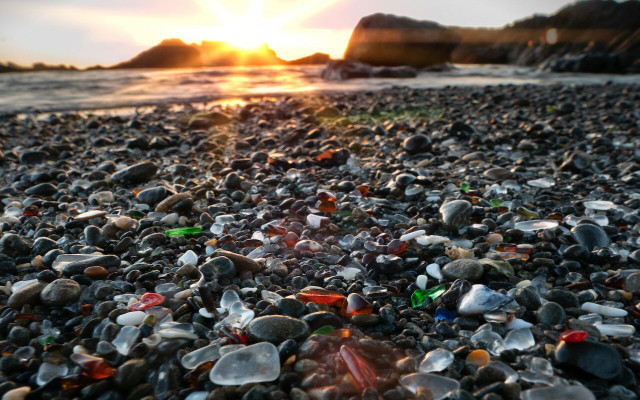
Finding sea glass can be such a treat when you’re looking for pebbles and shells to collect from your trip to the beach. If you’ve ever found yourself wondering what sea glass is, the answer is pretty straightforward.
When glass is tossed into the sea — whether purposely, accidentally, or as a result of a natural disaster — it gets broken into smaller shards. These small pieces are worn down through the tumbling, tossing, pushing, and pulling of the saltwater tides and waves against rocky and sandy surfaces. Sea glass is essentially nature’s way of recycling our trash.
It takes a minimum of 20 years for glass to become sea glass. The frosted look comes from the salt water leaching the glass, which chemically alters its composition and the constant movement in the ocean wears it down to give it a smooth finish. The highest quality sea glass has no shiny spots, is very well-frosted, and has smooth edges.
Where Does Sea Glass Come From?
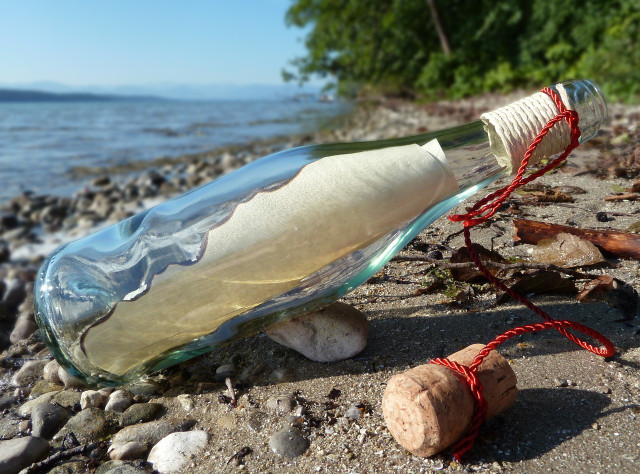


Glass is a recyclable man-made product made from sand, soda ash and limestone, which are natural materials. Items like glass bottles, jars, glassware, tableware, or even light fixtures from shipwrecks all contribute to the sea glass found on shorelines. Due to all glass being man-made, all sea glass is consequently a human by-product.
Beer bottles leftover from a beachside bonfire, wine bottles carelessly tossed overboard on a cruise ship, shipwrecks, and natural disasters like tsunamis, cliff erosion, and hurricanes are all ways in which glass can end up in the ocean.
Sea glass is becoming harder to find as fewer things are made with glass. Instead, plastic is favored heavily which is why there’s so much plastic pollution in the ocean — even making up horrifying new forms of pollution, like plastiglomerate or plastitar.
Best Places to Find Sea Glass
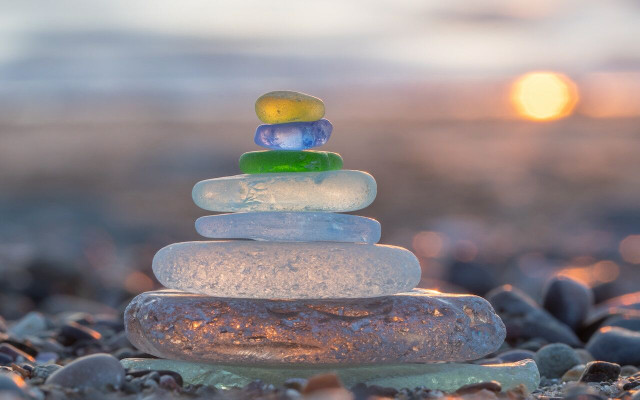


Collecting sea glass can be a great, more unproblematic alternative to shell collecting. Sea glass, in theory, can be found on any saltwater beach in the world. That said, it’s much easier to find in areas that have a stronger current or plenty of waves, as the water continually pushes more to the beach. For top-quality sea glass, search in areas with rockier and rougher beaches as this will help create a smoother finish.
Some of the most well-known sea glass beaches worldwide include:
- Seaham Beach, England: This area used to be home to glass factories, meaning plenty of glass found its way into the sea. While the beach used to be saturated with sea glass, much of it has been removed over time.
- Glass Beach, California: The history of this beach dates back to 1906 when the San Francisco earthquake tore the area apart. Much of the remnants and debris including mirrors, glassware, etc., were pushed into the ocean which is why it keeps reappearing. Fort Bragg has a sea glass festival that takes place each Memorial Day weekend and is home to the International Sea Glass Museum.
- Davenport Beach, California: A massive flood in the ’70s sent Lundberg Studio’s blown-glass trimmings down a creek and they ended up in the ocean. This means you can find some pretty unique pieces.
- Sea Glass Beach, Japan: This beach area was once again home to a dumping ground for trash. What makes it a popular spot is the likelihood of finding rarer colors of sea glass.
- Steklyashka Beach, Russia: During the Soviet Era, this beach was used to discard bottles from a nearby porcelain factory. The shoreline here is nearly more sea glass than sand making it a very unique sight to behold.
When to Look
Even if you head to a popular beach for sea glass hunting, there’s no guarantee you’ll be successful. In order to increase your chances of finding some of the coveted glass, keep the following in mind:
- Head out an hour before or an hour after low tide.
- Go hunting after a storm or high winds.
- Try searching when the weather is colder, as fewer people are typically on the beach.
- Bring a bag to pick up trash and do a beach clean up while searching for sea glass.
Read more: The 9 Best Eco-Friendly Summer Activities For Adults
Note: Always check the local regulations before removing sea glass from a beach, no matter where you go searching. In some places, it may be illegal and you could end up with a hefty fine.
Using Found Sea Glass



Once you’ve managed to find some sea glass — and ensured you can legally take it — it’s time to turn it into something unique so you can display your found goods with pride.
A few pieces of sea glass can be turned into:
- Fridge magnets
- Jewelry like pendants, earrings, or bracelets
- A piece of framed art
- A suncatcher
If you’ve found a lot of sea glass, you could try the following:
- Fill a small bowl and nestle candles inside.
- Add to the bottom of transparent vases when displaying cut flowers.
- Make an ornament with a fillable ornament available at craft stores.
- Glue them to string lights for your patio.
Long-time sea glass collectors may be looking to do something big or drastic with their finds, such as:
- A sea glass mosaic framed mirror
- A chandelier made of sea glass for coastal-themed bathrooms or bedrooms
- Sea glass flower ornaments to stick in your garden
Read more:
- 7 Upcycling Ideas for Home Decor
- 8 Things You Can Do to Save the Ocean
- Shell Collecting the Legal, Ethical, Eco-Friendly Way
Do you like this post?






